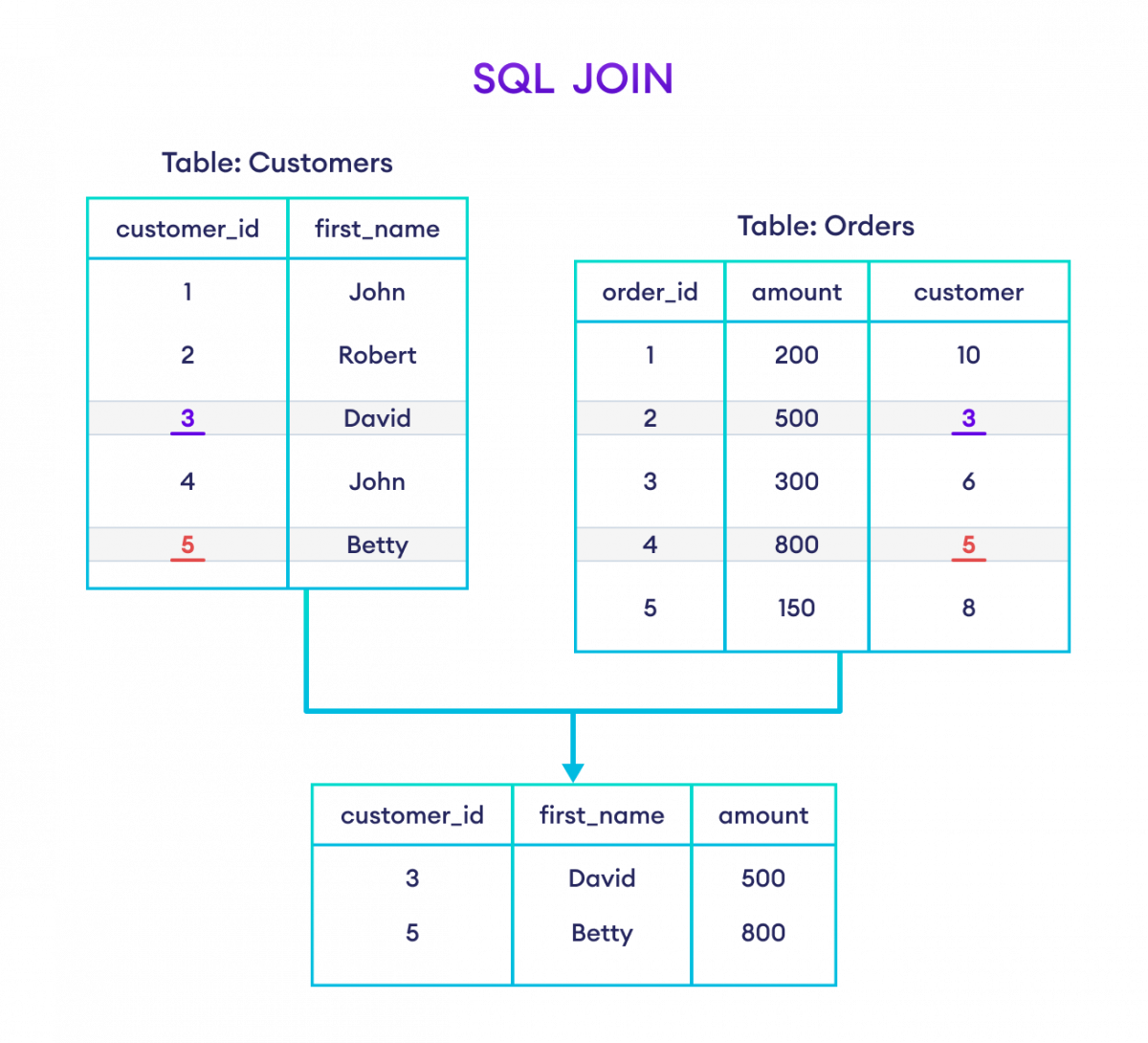SQL Tutorial for Beginners: SQL JOINS
Learn about SQL JOINS with the help of examples. Learn how to combine data from two or more tables in your SQL queries with the SQL JOIN operator.
The SQL JOIN joins two tables based on a common column and selects records that have matching values in these columns.
Example
-- join the Customers and Orders tables
-- based on the common values of their customer_id columns
SELECT Customers.customer_id, Customers.first_name, Orders.item
FROM Customers
JOIN Orders
ON Customers.customer_id = Orders.customer_id;Here, the SQL command joins the Customers and Orders tables based on the common values in the customer_id columns of both tables.
The result set will consist of
customer_idandfirst_namecolumns from theCustomerstableitemcolumn from theOrderstable
SQL JOIN Syntax
The syntax of the SQL JOIN statement is:
SELECT columns_from_both_tables
FROM table1
JOIN table2
ON table1.column1 = table2.column2Here,
- table1 and table2 are the two tables that are to be joined
- column1 is the column in table1 that is related to column2 in table2
Note: There are 4 types of JOINs in SQL. But INNER JOIN and JOIN refer to the same thing.
Example 1: SQL JOIN
-- join Customers and Orders tables based on
-- customer_id of Customers and customer column of Orders
SELECT Customers.customer_id, Customers.first_name, Orders.amount
FROM Customers
JOIN Orders
ON Customers.customer_id = Orders.customer;Here's how this code works:
 Example: SQL JOIN
Example: SQL JOIN
Here, the SQL command selects the customer_id and first_name columns (from the Customers table) and the amount column (from the Orders table).
The result set will contain those rows where there is a match between customer_id (of the Customers table) and customer (of the Orders table).
Types of SQL JOINs
As we mentioned, the JOIN command we performed in this article is INNER JOIN.
In SQL, we have four main types of joins:
SQL JOIN and Aliases
We can use AS aliases with table names to make our query short and clean. For example,
-- use alias C for Customers table
-- use alias O for Orders table
SELECT C.customer_id, C.first_name, O.amount
FROM Customers AS C
JOIN Orders AS O
ON C.customer_id = O.customer;Here, the SQL command joins the Customers and Orders tables while assigning the aliases C and O to them, respectively.
Also, we can change the column names temporarily using AS aliases. For example,
-- use alias C for Customers table
-- use alias O for Orders table
SELECT C.customer_id AS cid, C.first_name AS name, O.amount
FROM Customers AS C
JOIN Orders AS O
ON C.customer_id = O.customer;Apart from giving aliases to the tables, the SQL command above also assigns aliases to the columns of the Customers table:
customer_idcolumn has the aliascidfirst_namecolumn has the aliasname
#sql
